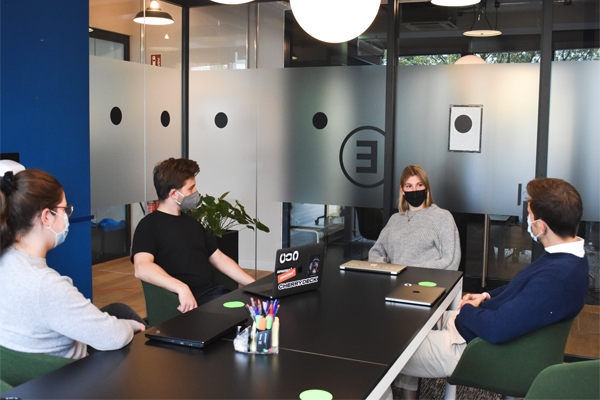The UK’s CIPD is urging employers to offer a wider range of flexible working options to address inequalities in the workforce and give staff a greater say over when they work, not just where.
While working from home has surged in recent months, the use of flexible working hours – such as part-time, flexi-time and compressed hours – has fallen over the course of the Coronavirus pandemic, according to new analysis from the professional body for HR and people development. The use of part-time working has fallen from 28.3% to 27.6%. Flexi-time has decreased from 12.7% to 12.6%. The use of annualised hours has fallen from 6.4% to 6.2%. In contrast, homeworking is the only form of flexible working arrangement that has increased during this time, from 7.8% to 10.1%. When comparing the last quarter of 2020 with January-March 2020, homeworking has roughly doubled from 5.3% to 10.1%.
In fact, the CIPD’s analysis of the ONS Labour Force Survey (from October to December 2020) found that homeworking (flexible location) is the only arrangement that has increased since the onset of the pandemic. This is despite many people needing to balance work with other commitments, such as homeschooling, childcare or other caring responsibilities, or volunteering.
FAIRNESS & EQUALITY IN THE WORKPLACE
In short, this means that many workers are missing out on the benefits of using arrangements such as flexi-time (altered start and finish times), part-time hours, annualised hours (a total number of hours for the year, worked over different patterns each week or month) and job shares. It also risks creating divisions or a ‘two-tier’ workforce of those who can work from home and those who need to attend the workplace and have little flexibility in how they work.
“There’s been a huge shift to homeworking since the Coronavirus pandemic and this has proved to be positive for a lot of people; with many organisations now looking at how to provide more choice in where people work as we come out of the lockdowns,” noted Peter Cheese, Chief Executive of the CIPD. “But our analysis shows a concerning downward trend emerging for all other forms of flexible working. If the use of other flexible working arrangements continues to fall this will drive many questions about fairness and equality in the workplace for those whose jobs require them to be in a place of work.”

INCREASING FLEXIBLE OPTIONS ON OFFER
The CIPD is therefore urging employers to take more action to ensure people who can’t work from home can benefit from other flexible working options. Homeworking must not be the only flexible working arrangement available, according to Cheese. “Employers should take action to offer and encourage the uptake of a broad range of options that give opportunities for everyone to have more choice and flexibility in how they work,” stated Cheese. “More flexible working in all its forms helps to attract and retain people with a broad diversity of needs and expectations about how they work, thereby fostering more diverse and inclusive workplaces. It can also be good for wellbeing and productivity.”
The CIPD is also calling for organisations and the government to make the right to request flexible working a day-one right through its #FlexFrom1st campaign (as reported) rather than after 26 weeks of employment as is the current requirement.
“We have all learned a lot over the last year and we should take these learnings forward to put people first and move to flexible working becoming the norm, not an exception. That’s why the CIPD is calling for the right to request flexible working from day one, so everyone can benefit from having more choice and a say in when and how they work,” added Cheese. “The official data also highlights unmet demand around flexible working arrangements, with 9.3% of workers – equivalent to around 3 million people – saying they would prefer to work shorter hours and accept the pay cut that comes with this. This suggests that, for many, the traditional 9-5 working day is too rigid and arrangements such as flexi-time, compressed hours and part-time hours could better match people’s preferences.”







































